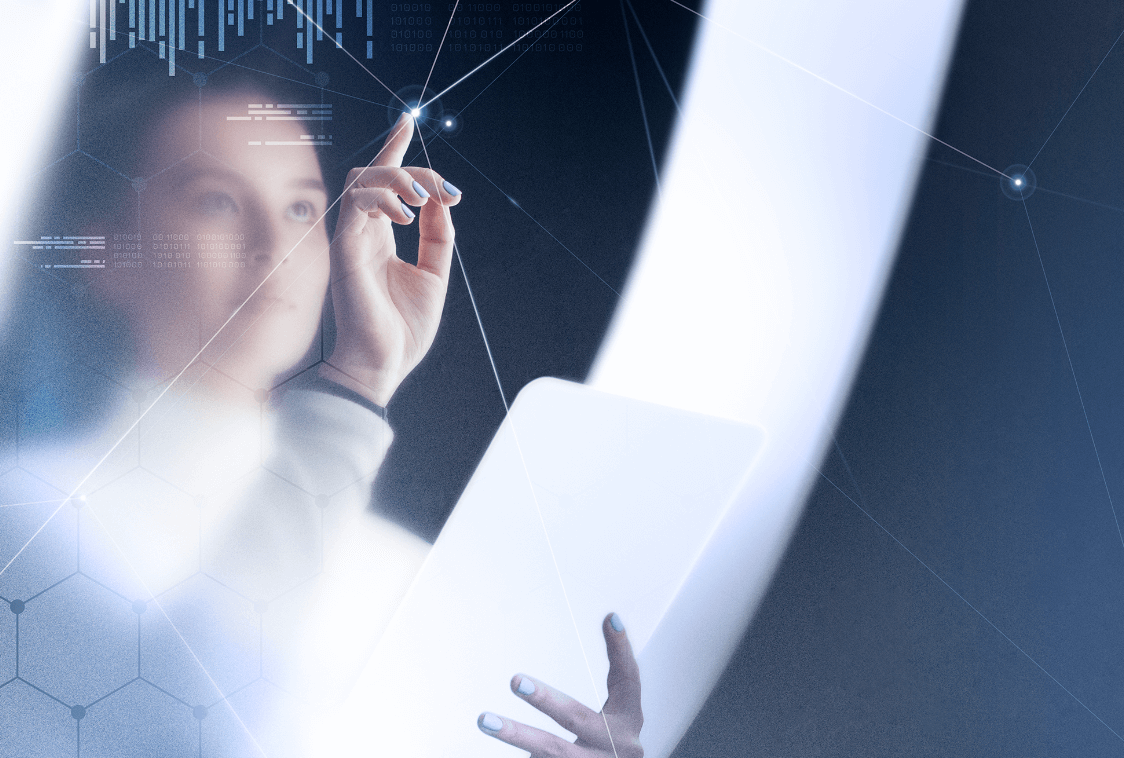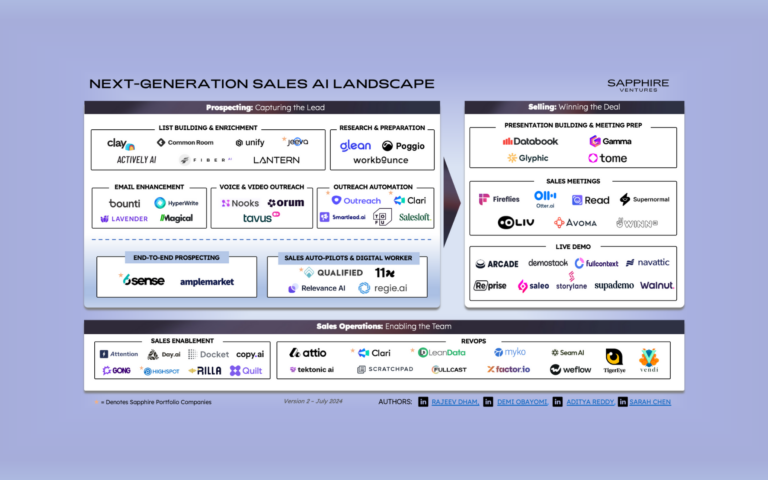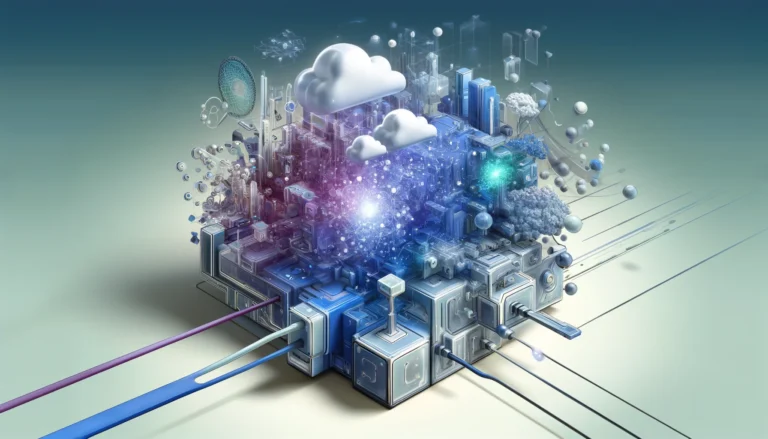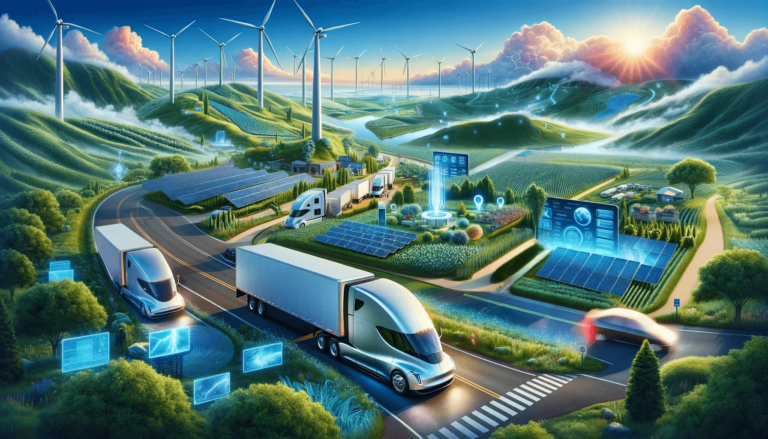This year’s Sapphire Vision Summit might be over, but the big thinking isn’t.
Our 2021 Summit brought together an exclusive group of 350+ startup CEOs, VC investors and innovative Global 2000 CIOs and CxOs to learn about what’s next in enterprise technology. We examined topics such as creating a cleaner world, making sense of the metaverse, remaking culture and retaining talent, staying ahead of cyber threats in a hybrid work environment and managing data as it increases in scale and complexity.
It’s no coincidence that our recently released 2021 CIO Innovation Index underpinned these themes and the new ways CIOs are thinking:
- 78% of CIOs plan to increase cybersecurity spend in the next 12 months
- 88% of CIOs said their companies now offer increased flexibility in remote work
- 65% of CIO technology strategies include adoption of sustainability tools
- CIOs expect startups to claim 15% of their IT budgets in 2022 indicating growing appetite for emerging technologies
But what’s driving such a significant refocusing of business priorities and strategies? The Atlantic CEO and former WIRED Editor-in-Chief Nicholas Thompson captured it best in his opening keynote:
“At this profound moment of change in the world, we’ve also experienced an immense change in tech where the forces of the last 10 years have pushed us into a phase of massive societal transformation.”
So, in case you didn’t get to the summit this year, we’ve recapped the five biggest ideas from the event that are set to change the business world as we know it.
Sustainability is a strategic imperative
The How to Achieve Sustainability at Scale: Technology Strategies for a Cleaner World panel kicked-off by outlining how organizations should start their climate journey by understanding their baseline emissions. From there, they can build realistic roadmaps that not only ensure accountability for targets at a corporate level, but also address cultural change among employees.
And B2B sustainability software is a growing category that’s helping businesses meet their decarbonization goals – from e-commerce enablement companies like Recurate, Archive and Treet, to climate risk intelligence providers, such as Kettle, Cervest and Climate AI, that can help companies protect their vital assets from climate-related disasters.To drive this change, Scott Russell, Head of Customer Success at SAP, pointed to technology’s role in operationalizing and delivering on environmental targets. “Whether you need to make better travel decisions, purchasing decisions, design decisions or production decisions, technology gives you the insights to make the best sustainable decisions at that time.”
Welcome to the metaverse’s expanding possibilities
When the word “metaverse” exploded following Facebook’s name change to Meta last month, it was met with both excitement and confusion.
In their closing keynote Strategizing for the Metaverse: How Enterprises Can Prepare for the New Reality, they explained how the metaverse represents a coming together of technologies – such as crypto, which adds an economic layer and NFTs, which let people own digital assets – to create an entirely new way of interacting online.We brought Lindsey McInerney, former Global Head of Technology and Innovation at Anheuser Busch InBev, and Kathy Hackl, Chief Metaverse Officer and CEO of the Futures Intelligence Group, together for a discussion around how the metaverse will change the way we do business in the digital space.
But the idea that you can carry digital goods between different digital universes and worlds owned the conversation. “It’s moving away from performing by the rules of whichever platform you’re on and towards the current state of the internet that allows people to carry things to all of these different worlds. I think this will really unlock the value in digital goods,” said McInerney.
Retaining talent through the Great Resignation
Shifting gears from the future to the present, the Avoiding the Great Resignation: How to Remake Culture & Retain Talent panel turned its attention to hiring at a time when employees are reprioritizing their work-life balance and resigning in record numbers – 4.4 million Americans left their jobs in September this year alone.
Kat Kennedy, President and Chief Experience Officer at portfolio company Degreed, put the rapid employment shift down to, “a dichotomy between what leaders think people want and what employees actually want. That’s where we’re really feeling the pain and lack of engagement and retention.”
Amy Hays, Vice President of Global Learning and Development at Meta, then outlined how employee expectations have changed and how organizations need to adapt. “People are seeking more autonomy, personalization and flexibility. And remote work has given people a lot more choices on how they get those things. At the same time, given what people are grappling with in a remote environment, there is also a need to connect. How do we care for each other when we’re not together?”
Such a drastic shift in the hiring and retention landscape is putting pressure on organizations to deploy people-first strategies that map to employee engagement and wellbeing. “In order to help people belong, we have to know them. And that’s really where I believe technology comes into play,” Kat adds. Indeed, using technology to help employees feel belonging and valued is one place leaders can start to make the new distributed working environment more connected, engaging and meaningful for employees.
New tech and attitudes are taking on rising cyber threats
If organizations think of IT assets as inventory, then the distributed way of working means their assets are now deployed all over the world, are more ephemeral and are harder to monitor, especially with the push to the cloud.
And while some organizations are not yet equipped to model the risk that comes with these changes or build the policies to better manage dispersed assets, help is coming. “AI/ML is really the solution here. It helps us to look at data holistically and deal with it at a scale which honestly, humans cannot,” observed Sreelakshmi Kolli, Chief Digital Officer, Align Technology.
As the One Step Ahead: Proactive Cybersecurity for a Growing Threat Ecosystem panel – made up of leaders from AirBnB, JupiterOne (a Sapphire portfolio company), and Align Technology – aptly noted, this challenge is also shifting the priorities of organizations and giving security teams a louder voice in the boardroom.
“Security is becoming a much more prominent topic in most organizations. More CISOs are reporting directly to CEOs. Another interesting thing is most boards today have at least a cyber expert or technology expert, even a separate cyber committee altogether. So it’s not just talk; people are following up,” explained Vijaya Kaza, Chief Security Officer and Head of Engineering & Data Science for Trust & Safety, AirBnB.
Managing data in a time of abundance
As enterprises grapple with a growing influx of data and increasingly complex use cases, a growing challenge has become balancing speed, personalization and efficiency with governance, privacy and security.
This balancing act is, in large part, due to a disconnect between business people and implementation people. “Data is a team sport, IT can’t pull it off on behalf of the organization. You have to create the right balance of structure,” said Sharon Mandell, SVP and CIO, Juniper Networks. “There’s this group of people who have to bridge that gap, who have to be technical enough to communicate with the engineers, yet subject matter adept enough to act as translators.”
The How Enterprises Can Win by Leveraging the New Open Data Ecosystem panel then turned its attention to open source data tools and in particular the need for these tools to be highly integrated, especially in larger hybrid multi-cloud environments. Speakers explored how deep integration of open source tools can lead to data and workload portability for enterprises, meaning they can more easily move data between databases and change cloud providers if needed.
Fast changes require careful thought
But when it came to finding the right balance between investing in open source tools versus specific vendors, Billy Bosworth, CEO at Dremio (a Sapphire portfolio company), put it best, saying, “it’s about creating a balance between open source and trusted vendors. How can you parse out your use cases and your workloads that are going to maximize the efficiency of the technologies, but also deliver the business results.”
A unanimous theme coming out of our Summit was that for any company to have a fighting chance in an increasingly competitive distributed world, it must “remake,” “reinvent” and “reimagine” itself.
Our event’s main keynote drove this message home, but delivered it with a caveat of social responsibility. In his session, Nicholas explored each side of the tradeoffs in the world of tech – each side neither right nor wrong but requiring careful consideration in order to make the most thoughtful decisions. Deciding between tradeoffs is never easy – but these decisions deserve our attention because they often have cascading consequences on the world around us.
Nicholas’s session left us reconsidering our current decision-making processes and hopeful that we’re all capable of positively influencing our surroundings with the power of tech.
Though the Summit is over, the learning certainly isn’t. If you missed this year’s Summit, be sure to watch it on-demand here.
Check out Sapphire Vision Summit 2021 on-demand today!




